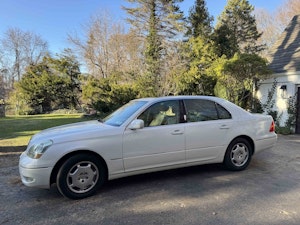Media | Articles
1963 Chevrolet Corvette Coupe: King of the Corvettes
The Chevrolet Corvette is “America’s sports car” for good reason. The mystique surrounding the creation of the first Corvette in 1953, along with that car’s rarity, have turned it into one of the most collectible American cars.
In 1955, V8 power did wonders for the Corvette’s usability and thus its popularity, and a slow, dedicated evolution during the next seven years saw increases in power, handling, refinement, and sophistication. A burgeoning national racing effort in the SCCA, as well as privateer efforts at international venues like Le Mans, added to the Corvette’s allure as a performance car on par with anything coming out of Europe.
If the advancements made to the first-generation (C1) Corvettes were seen as evolutionary, the 1963 model was nothing short of a revolution. No Corvette captures the imagination quite like the Split-Window Sting Ray of 1963. It is arguably one of the most beautiful designs ever put on four wheels, and its one-year-only status has cemented it as a legend in the collector car world.
Plans for the second generation (C2) Corvette began in the late 1950s and can be traced in one form or another to Bill Mitchell’s 1959 Stingray experimental racer. Introduced in late 1962, the C2 Corvette featured crisp, angular fenders, enclosed pop-up headlights, limited brightwork, and a sharp, boattailed rear end. On the coupes, the doors cut considerably into the roofline and the rear glass was fixed. Interior styling benefited from subtle and not-so-subtle touches, including many silver switches and a deep dual-cove instrument panel.
This marked the first time the Corvette was available as both a convertible and a coupe. Both were lower, narrower, and shorter than the C1 model. And it was the coupe that garnered so much attention, as it featured a split rear window, a feature that would disappear for 1964 following complaints of rearward visibility.
Beneath its handsome new fiberglass body, the chassis and components were all-new as well. The wheelbase was reduced four inches to 98 inches. Gone was the solid rear axle, and four-wheel independent suspension, a first, was now standard, which did wonders for the car’s road-holding capabilities and reduced unsprung weight considerably.
Marketplace
Buy and sell classics with confidence
The one thing that did carry over from the C1 to the C2 was the selection of powerplants. The 327-ci V8 that had debuted in 1962 returned. In base guise, it put out 250 hp. Optional engines included a 327/300, a 327/340, and a fuel-injected 360-hp 327.
Two standout models from this standout year include the Z06 and the ultra-rare Grand Sport. The Z06 was basically a turnkey race car and either included or required the injected 327/360, heavy-duty suspension, a 36-gallon fuel tank, dual-circuit power brakes with cooling fans, a 4-speed manual transmission, and a Posi-traction rear end. While the base Corvette cost $4,257, the Z06 package added another $2,500; just 199 were built. The Grand Sport, meanwhile, was basically a GM skunkworks racer, of which just five were built, and today they are considered one of the most collectible American cars.
The C2 Corvette would carry the domestic performance torch until 1968, with all manner of power and convenience options upping its desirability during the brief production run. And though the later cars offered more power, no Corvette exemplified the spirit of America’s sports car better than the 1963 Split-Window coupe.









